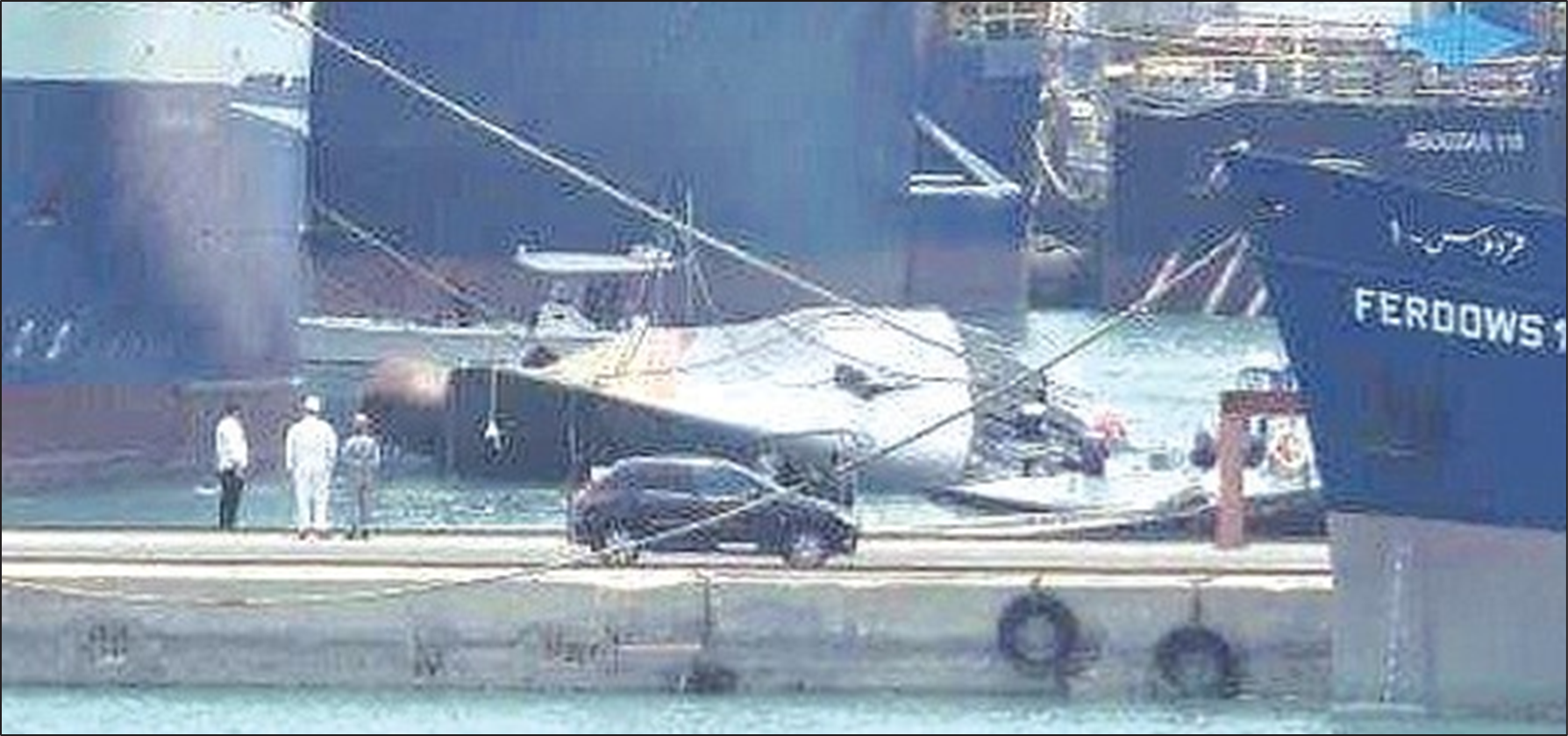August 16, 2024
Another Iranian warship has sunk, capsizing at a dock while
under repair. It is the third of Iran’s home-built frigates to capsize. And it
sank twice in three days! The state news agency reported the frigate Sahand
began taking on water while docked in Bandar Abbas for repair work early in
July. A photo showed the frigate laying on its port side with about half of the
vessel under water. The agency said that due to the shallow depth of the waters,
it was not hard to refloat the Sahand quickly. However, the day after the
Sahand was righted, it flipped over again and sank once more; this time only
the bottom of its keel was visible above water. After the second capsizing, it
took 13 days to get the vessel upright again. Iranian news reports emphasized the absence of physical
signs of damage. But the fact that all its electrical gear and other equipment
spent 13 days immersed in salt water is likely to have resulted in considerable
damage. Some news reports speculated that the ship capsized because the
additional military equipment that had been put on the ship to make it a
greater threat had also made it top-heavy. The ship now carries many more missiles than originally. It
reported that some people on board the Sahand were injured in the first
capsizing and one was killed. It did not say how many were injured. Such
capsizing, unfortunately, is nothing new for this Moj-class of frigates Iran
has been building for a dozen years. Three of the seven almost half have
capsized. Such a fate befell the 1,300- ton Sahand’s sister ship, Damavand, in
January 2018, when the Damavand struck a breakwater as it was trying to reach a
dock at Bandar Enzeli in the Caspian during a storm. The Damavand similarly rolled over and sank. Two people
died. The Iranian Navy said the ship was subsequently raised, repaired and was
recently put back into service, though other accounts say the current Damavand
is an entirely new vessel. Another sister ship, Talaiyeh, capsized while it was
under construction. Construction of the Talaiyeh has still not been completed. One person died in that capsizing. Seven ships of the Moj
class have been laid down with five of them now in service and the other two
still under construction. The Sahand was built in 2012 and named after a ship
the US Navy sank in 1988 during a day-long clash with the Iranian Navy.
Bryan Clark, a senior fellow at the Hudson Institute and expert on naval operations, told Business
Insider he believes the capsizings were “largely the result of poor maintenance
and inadequate training.” But, he added, “The updated design probably didn’t
help because it raised the center of gravity, which will reduce its stability.”
Steven Horrell, a former naval intelligence officer and senior fellow with the
Transatlantic Defense and Security Program at the Center for European Policy Analysis
(CEPA), suspects “maintenance and training played a part” in the accident.
While the Sahand’s hull is “certainly salvageable,” the CEPA fellow anticipates
“a long process” for returning it to service. “Electronics and seawater don’t
mix, and for that matter mechanical parts the whole engineering plant and
propulsion train are subject to water damage and corrosion,” Horrell said.
“They will be replacing systems from stem to stern.” Horrell
also noted that this class of frigates is based on an older class built by the
UK for pre-revolutionary Iran. Horrell said. “If you put more superstructure on
a similar hull, you might be creating center of gravity problems, which would
contribute to the rapid rollover Sahand experienced.”
